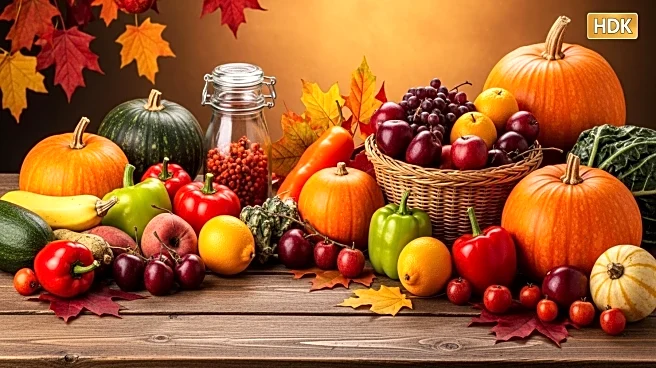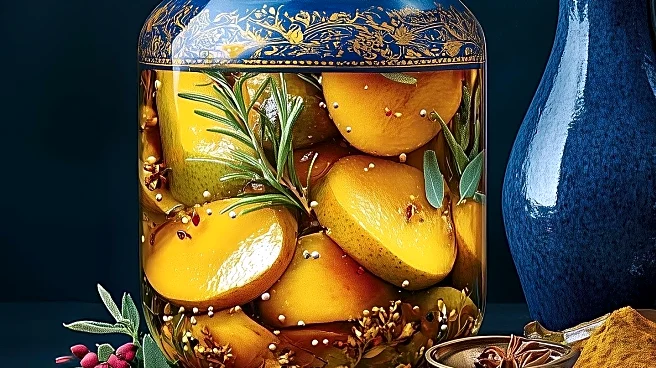What is the story about?
What's Happening?
Pumpkins, a staple of autumn, have a rich history that extends beyond their current popularity in seasonal products like pumpkin spice lattes. According to Cindy Ott, author of 'Pumpkin: The Curious History of an American Icon,' pumpkins evoke a nostalgic ideal of simpler times and small family farms. Historically, the word 'pumpkin' has evolved from the Greek 'pepon' to the French 'pompon,' and finally to the English 'pompion' in the 1500s. The plant itself, however, has deep roots in the Americas, where Indigenous peoples domesticated various types of pumpkins over 10,000 years ago. The term 'pumpkin' was initially used by European settlers to describe a general type of squash, similar to how 'corn' was used for any grain. Over time, the word 'pumpkin' also developed a figurative use, becoming a term of endearment and a symbol of a romanticized agrarian past.
Why It's Important?
The cultural significance of pumpkins highlights the intersection of history, language, and agriculture in American society. As urbanization increased in the late 19th century, pumpkins became symbols of a bygone rural lifestyle, helping urban dwellers maintain a connection to their agrarian roots. This nostalgia has economic implications today, as small-scale farmers capitalize on the cultural cachet of pumpkins to attract visitors to their farms. By turning their farms into 'agrarian wonderlands,' these farmers tap into the public's longing for a simpler, pastoral past, thereby supporting local agriculture and preserving farming traditions. This trend underscores the enduring impact of cultural symbols on economic practices and community identity.
What's Next?
As the popularity of pumpkins continues to grow, small-scale farmers may increasingly leverage this trend to boost agritourism and local economies. The cultural and economic revival of pumpkins could inspire similar movements for other traditional crops, fostering a broader appreciation for agricultural heritage. Additionally, the ongoing interest in pumpkins may lead to further exploration of their historical and cultural significance, potentially influencing educational and cultural initiatives. Stakeholders in agriculture and tourism might collaborate to enhance the visibility and appeal of pumpkin-related activities, ensuring that this symbol of American heritage remains relevant in contemporary society.
Beyond the Headlines
The story of pumpkins also raises questions about cultural appropriation and the commercialization of traditional symbols. As pumpkins become more commodified, there is a risk of losing sight of their historical significance and the contributions of Indigenous cultures to their domestication. This dynamic highlights the need for a balanced approach that respects cultural heritage while embracing modern economic opportunities. Furthermore, the romanticization of pumpkins as symbols of a simpler past may obscure the complex realities of historical agricultural practices and the challenges faced by contemporary farmers. Addressing these issues requires a nuanced understanding of the cultural and economic forces at play.
AI Generated Content
Do you find this article useful?














